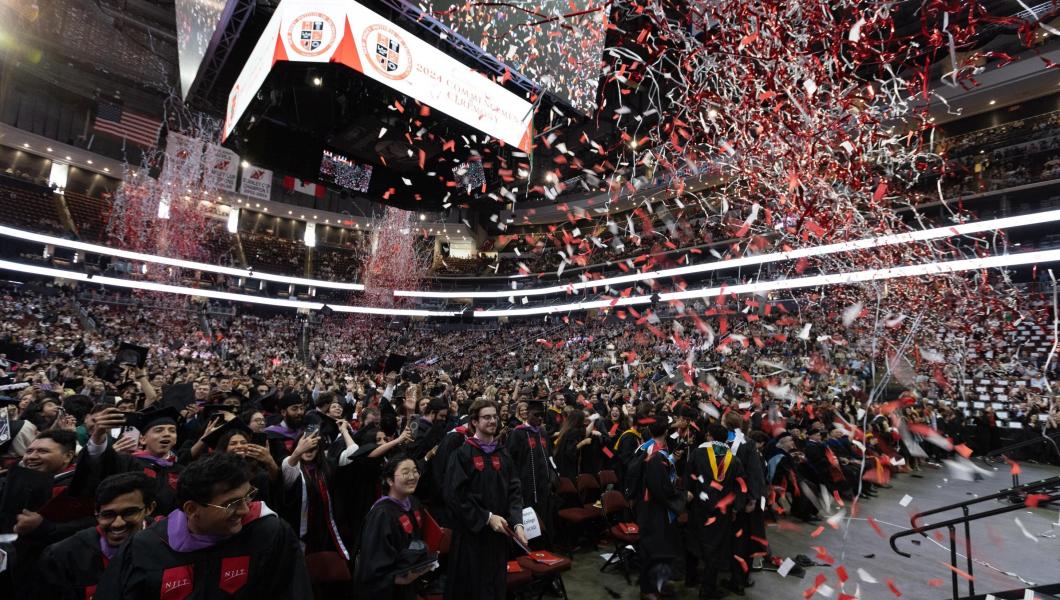Learning and the Design of Equitable Education

Mark Thaler, M.Arch ‘94, is co-leading Gensler’s Global Education Practice, where they have set out to address the inequities in education and reimagine learning. Using research and the tools of design they are working with educators, administrators, school districts and students to distinguish how we learn, the qualities of the spaces we learn in, how we engage with learning, and the learning experience that is possible when these are connected. The design thesis that forms the basis of their practice sets out the premise that architects have a role and responsibility in the ongoing national conversation on the quality of education, that the understanding of how ‘deep’ learning needs to be applied to design solutions, and that a paradigm shift in the education model is emerging.
“What the Covid-19 crisis has revealed is the inequity in education. These factors were in play before the pandemic and these converging global crises have had a marked effect on the student. Now is the opportunity to bridge that gap. Schools are designed around the mythic average learner and the learning model isn't leading to engagement anymore. We need inclusive design, the idea is that different learning modalities have to be considered when you are designing schools,” says Thaler.
Photo credit Jeswin Thomas Unsplash

As Gensler’s research shows, people’s creativity and productivity improve when they have real options about where, when, and how they work. This applies equally to university and high school students. The team conducted extensive research to synthesize a design thesis. Citing a report from the Harvard Graduate School of Education they highlight how the current education model (high school to college to career) works for only about 30 percent of the young people who are educated within it and that it is necessary to develop new pathways from school to career in collaboration with industries.
Photo credit Jeswin Thomas Unsplash

“The challenge is to train people for jobs that may not even exist yet and for problems we may not even know about. And we can't prescribe a single pathway - for some students the end of the road might be workforce training,” said Thaler.
As the team puts it, design of the environment for learning also needs disruptive rethinking, to provide for the needs of diverse learners, adaptable spaces for multimodal learning, and an environment that engages learners.
“There is a responsibility on the part of the design community to advocate for the things that are in our purview. That the school buildings with the double loaded corridors need to morph into things that build community and a place of belonging. That makes schools look much different.”
Gensler always does human centered research before all projects that include visioning sessions, community workshops, using toolkits for hearing from the quiet voices. Thaler acknowledges that they are still working to find all of the important voices on the education front, and that the education practice is working with the experience of the Gensler community outreach team.
“After the shootings and protests we really wanted to hear from black voices. Through the Architecture, Construction and Engineering (ACE) mentorship program we did some survey work with teens around symbolism and safety. As part of this we showed a group of students in the ACE program pictures of different types of schools: independent charters, grassroots NYC public, and private schools. The schools with lots of glass and wood were identified as the schools where smart people go,” said Thaler. “We realize designs have messaging.”
Thaler and the group completed the research a month ago. They are clear that schools carry messaging about the wealth disparities inherent in many schools - and can also be designed to convey integration, belonging and deliver connected learning. Recently the research team presented their findings to the entire diversity team and the Co-CEO’s at Gensler. Three key insights of the research presented were: designer thinking is part of the problem, a sense of safety and belonging may have more weight for students of color than the physical environment, and it is necessary to listen well to student experience.
Thaler did not start out in institutional and education design. He graduated with a degree in engineering and landed his first job at Leslie E. Robertson Associates (LERA). Thaler acknowledged, “For a young structural engineer, working for such an accomplished, inspirational firm was an incredible opportunity. Les worked with designers like I.M. Pei, Robert Venturi, Gunnar Birkerts, Philip Johnson, and others. It didn't take long for me to be inspired by the work of these icons, the trace and the models were very interesting to me. I started to map out a career path to get a professional masters without having to pay thousands of dollars.”
Thaler appreciated that NJIT makes it work for working people. He also recognized that the college was at the cutting edge of new things like visualization in design. He credits Peter Pappademetriou for figuring out how Thaler could use his structural engineering experience to work as a teaching assistant for the structures courses while completing his degree.
“NJIT was able to get these really amazing people to come teach. That’s what got me started - Jim Polshek came to a lecture, I ended up working with him for eight and a half years, that's where I learned institutional design. He is a humanist and always thinking in terms of the human scale. When I left there I came to Gensler.”
As Thaler explained, “Gensler did not have an education practice, but it is the kind of place that if you have interest and passion to build a practice they will support you. He now runs a full-fledged studio of 25 people that includes architects, strategists and consultants. "Architecture school used to teach us that we design for our clients. When it comes to equity and the essential elements of learning and design, now we design with our clients.”

